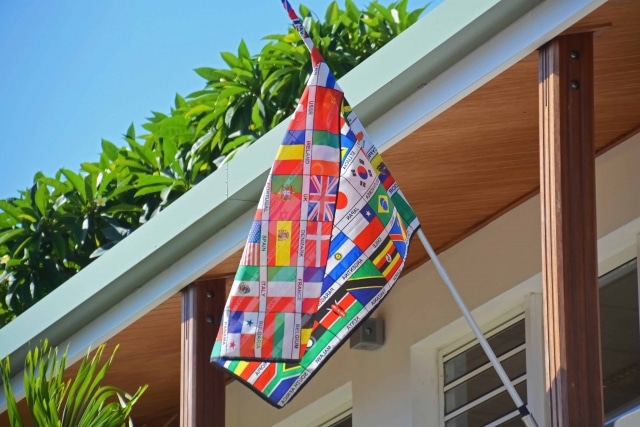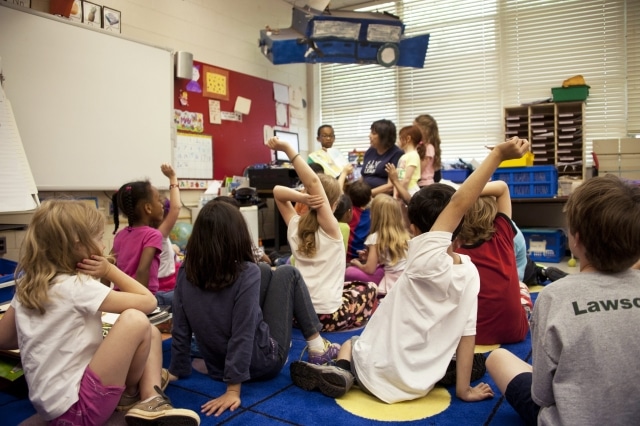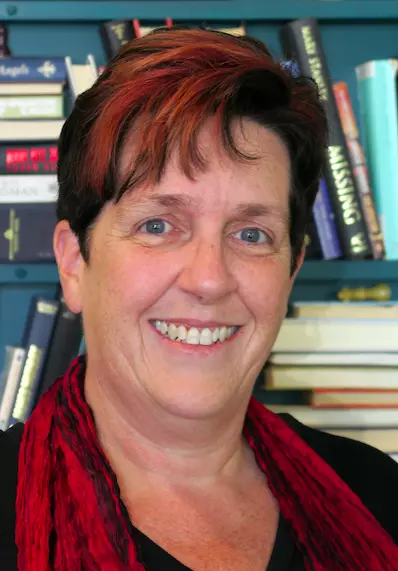As students make their way through high school and into Years 11 and 12, they become more focused on their futures.
Some students may be looking forward to ending their school life and moving into the workforce. Other students may be considering an apprenticeship or a trade as a career, so are looking to apply to study at a Technical and Further Education (TAFE) institution. And many will be intending to continue their learning at university.
Whatever the pathway, big decisions need to be made. While this is exciting, it can also be quite stressful — particularly for the student who needs a higher level of exam results to get into the university and degree of their choice.
Prior to the 1970s, university education in Australia was largely limited to those who could afford it. In 1974, however, the Whitlam government decided to abolish the exorbitant university fees and apply government subsidies and a loan system to make university education more accessible to every Australian, regardless of their financial status.
While this decision certainly had a positive effect on tertiary enrolments, it also created a higher level of competitiveness, necessitating the implementation of a ranking system based on Year 12 assessment and exam results. Essentially, the more popular a particular degree is (and the higher the academic level), the higher the score that was needed to gain admission.
These days, every state in Australia has its own ranking system for the Year 12 certificate and university entrance. In NSW, students study for the Higher School Certificate (HSC); in Vic the ranking is the Victorian Certificate of Education (VCE); Qld has the Queensland Certificate of Education (QCE) and Canberra has the ACT Scaling Test (AST). Subject requirements and scoring for each state exam are different but are scaled to give students an Australian Tertiary Admission Ranking (ATAR) — and this is what they use to get into the uni course of their choice.
However, going through Years 11 and 12 and getting an ATAR is not the only way you can get into university in Australia. In fact, if you've set your sights on international university admission, you may want to consider a program that is more rigorous and opens up more doorways in a global sense — The International Baccalaureate Diploma Programme.

Before you concern yourself about meeting educational standards with the International Baccalaureate, the program is tailored to meet educational expectations in every country. For Australia, this means following the National Curriculum and producing a score that is scaled to an equivalent ATAR.

History of the International Baccalaureate Diploma Programme
In 1962, the International Schools Association conference was held in Geneva. During the conference, a group of social studies teachers created the International Schools Exam Syndicate (ISES). Later, this became the International Baccalaureate Organization (IBO) and then the International Baccalaureate (IB).
The first IB World School opened in Geneva, Switzerland, in 1968. The program was designed as a non-profit educational program, with the key learning goals being to instil global values, skills, knowledge and understanding in the students who studied the Diploma.
Originally, the IB was only offered to senior secondary students but then, as it gained in popularity, the International Baccalaureate was extended to include the Middle Years Programme (MYP) in 1994, the Primary Years Programme (PYP) in 1997 and finally the Career-related Programme (CP) in 2006.
Today, 160 countries throughout the world have IB World Schools, including Australia, which boasts over 200 IB World Schools in every state and offers all four programs.
Benefits of the IB Program
The advantages of having studied through the IB program are not limited to academic ones — although, of course, the academic curriculum is a big part of the IB.
For the most part, the IB programs — PYP, MYP and Diploma Programme (DP) — are geared towards students who are intending to go on to tertiary study. However, the most recently introduced program, the Career-related Programme, is now an alternative for students who want to maximise their career opportunities but not through a university degree.
One of the greatest benefits of the programs is students get to know themselves as learners. Each student is encouraged to identify their strengths and areas that need improvement. Students learn how to identify their optimal ways of learning to achieve the best outcomes and they learn how to apply their individual skills to gain maximum benefit.
A deep knowledge of the different styles of learning and an understanding of how you learn are extremely beneficial skills to have as you enter tertiary education. In this way, the programs within the IB framework can be seen as preparatory programs — for higher education success and life in general.

Generally speaking, we can consider there are four key reasons why a student should think about entering the International Baccalaureate course of study.
University preparation
Often, preparatory courses for uni are conducted in high school in a very arbitrary manner, with the quality being highly dependent on the individual teacher. In fact, while the Australian Curriculum does emphasise the development of study skills, it is, on the whole, a very subject and content-based curriculum. The emphasis on time management and self-study, along with the long and short-term projects such as report and essay writing, source citations and independent research, ensure each student is ready to tackle the requirements of tertiary study.
Global recognition
The fact is straightforward — the International Baccalaureate Diploma Programme is recognised by all leading universities throughout the world. The IB scoring system is universally understood and regardless of where you sit your final exam, the results are understood by admissions officers throughout the world.
However, it is also important to know that some universities place more value on the IB than others. In fact, the IB carries more direct weight in the US than it does in Australia. This is not to say that studying for the IB is pointless in Australia but it should just not be assumed that the possession of a completed IB means they'll get into their desired course — scores continue to play a huge role.
Well-rounded education
While it is true that IB schools in Australia follow the country's curriculum, the difference is the way the teaching happens and the breadth of understanding given in each subject.
Foreign language acquisition is a key component of the IB and is mandatory throughout every level (unlike in Australia, where language study ceases to become mandatory after Year 7 or Year 8). Language acquisition is central to the IB's focus on global issues and understanding.
Mathematics, English and literature, science and society studies are also emphasised in the IB curriculum. The main difference is that learners are encouraged to delve deeply into their personal interests, whether these be in mathematics, literature or science.
Personal development
One of the original goals outlined by the IBO was to create a more peaceful world by developing socially conscious adults who will go on to make meaningful contributions well after they’ve completed their formal education.
This means not only growing as a student but as a human.

Each student is required to become involved in activities outside their classes and in the community. This not only allows the student valuable time away from the rigours of study but also allows them to develop teamwork skills and empathy in a natural environment rather than in a contrived way in classes.
Where can I enrol in an IB World School near me?
Where is the International Baccalaureate Available in Australia?
To begin teaching the IB program, schools must go through an extensive accreditation process. Many Australian schools do this because of the known benefits to the school itself as well as the student population.
Australia's first IB World School opened in 1978 and there are 215 schools offering the IB programs, either in isolation (that is, PYP or MYP only) or as part of a two or three-program package.
The most commonly offered program is the Primary Years (152), followed by the Diploma Programme (86), the Middle Years (48) and then the Career-related program (which is yet to gain traction with only three institutions listing it as available).
Every state and territory participates in the IB. Most schools are found in Victoria (92), with 40 institutions in SA and 36 in NSW. For such a small population, Canberra has a surprisingly large number of IB institutions (13).
If you're looking for more information on the IB and where you can enrol, you can check your state education department or the IBO website (where you will find a multitude of other information and resources.)















